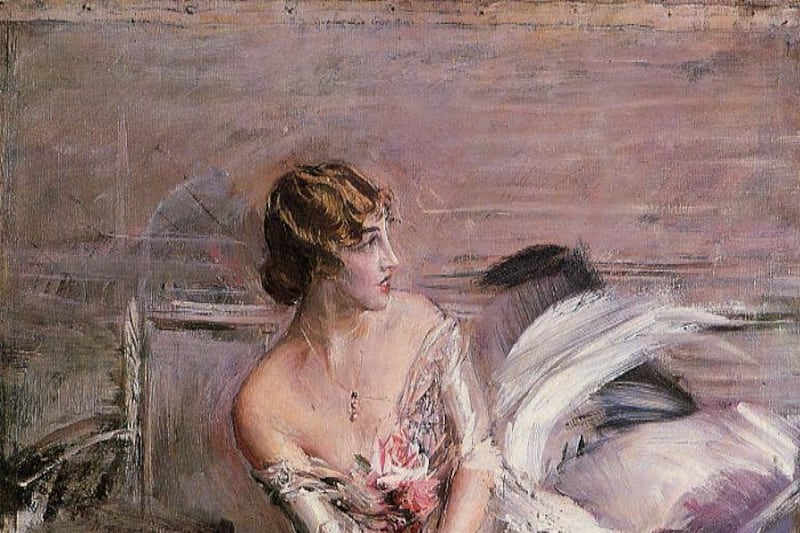On Wednesday last, June 28th, a rather special event occurred beside the grave of James Joyce in Fluntern Cemetery, Zurich. A plaque was laid into the ground there containing the entire text of a poem Joyce wrote about his daughter, Lucia, A Flower Given to my Daughter. The plaque was the brainchild of Stephen Joyce, grandson of the author. And its installation was brought about by the good offices of Michael D Higgins, President of Ireland.
The late Stephen Joyce, who died in 2020, had thought of installing this object in order to make up for the fact that Lucia was not buried in the grave, where other members of the Joyce family (apart from Stephen himself) are laid. Lucia, who had been a patient in St Andrew’s Hospital, Northampton, for many years prior to her death in 1982, is buried in a cemetery in that city.
This anomaly had been raised by Stephen in the many conversations he had held with President Higgins. The two men had developed a good relationship, leading, among other things, to Stephen’s decision to accept citizenship of Ireland, a country against which he had railed virtually all his life, shortly before he died. The President had undertaken to explore with the Zurich authorities, who are very protective of the cemetery, and especially the Joyce plot, the possibility of installing such a plaque.
His efforts bore fruit in the recent event, and even though Stephen did not live to see it, he must have been fairly confident that this would happen, given the powerful backing it was receiving. Present at the installation of the plaque were, among others, Dr Fritz Senn, the 95-year-old director of the Zurich James Joyce Foundation, and the Irish Ambassador to Switzerland, Eamon Hickey. A representative of the James Joyce Estate has warmly welcomed the development.
Drum role: Alison Healy casts an incredulous eye over a much-loved Christmas carol
Kindred spirit: Áine Ryan on the joys of reliving a Christmas childhood through her grandchildren
The woman who enchanted Proust – Frank McNally on the rise and fall of Gladys Marlborough
‘He never said that’: Frank McNally is tired of hearing a phantom WB Yeats quote
The short poem, written in Trieste in 1913, is in Joyce’s collection, Pomes Penyeach. As with all the poems in this collection, which appeared in 1927, it is deeply personal, in sharp contrast to Joyce’s contemporaneous prose work. Here is the text of the work (and we can be quite sure that, unlike a certain notorious Irish coin, the text on the plaque is correctly transcribed):
Frail the white rose and frail are
Her hands that gave
Whose soul is sere and paler
Than time’s wan wave.
Rosefrail and fair – yet frailest
A wonder wild
In gentle eyes thou veilest,
My blueveined child.
As with the other poems in the collection, the work is deceptively simple. Who, for instance, is the giver of the rose? That remains a mystery, extremely tantalising to biographers, who have advanced many speculations. But whoever she may be, ultimately in the poem, Joyce’s love for his daughter transcends the identity and the emotional attraction of this donor.
Lucia’s story is a particularly tragic one. She was obviously very artistically gifted, especially as a dancer, and she was also a talented artist. But she began to show signs of mental disturbance from 1930 on, leading to her eventual institutionalisation from 1936 to her death. Much controversy has raged over what went wrong: no doubt mistakes were made in the medical and familial approaches to Lucia, even if, as one senses, Lucia’s issues were ultimately intractable on a psychiatric level.
Whatever about that, historical developments also played their part in Lucia’s eventual detachment from the rest of her family. When the Germans invaded, Lucia was moved from her clinic near Paris, within easy reach of her family, to La Baule in Brittany, much less accessible. And when the rest of the family were obliged to flee from Paris to Vichy France and then eventually to Zurich, even Joyce’s considerable ingenuity was unable to bring Lucia with them.
He intended that Lucia would eventually be brought to join them in Zurich, and was even prepared to consider declaring her an Irish citizen, something he was very reluctant to do, in order to effect their reuniting. But his sudden death in January 1941 put an end to all such plans, her brother Giorgio explicitly ruling it out. Her mother, Nora, never saw her again.
As a result, the grave in Zurich contains the remains of Joyce, Nora (she was reunited with Joyce in the tomb in the 1960s after originally being buried separately from him), Giorgio and Giorgio’s second wife, Asta Jahnke-Osterwalder. Missing are Lucia and, by his own wishes, Stephen, who is interred with his wife in the Île de Ré off La Rochelle in western France.
The occasion on June 28th, then, rectifies an accident of history and restores Lucia to her rightful place with the rest of her family, even if very posthumously. It is intended that President Higgins will later visit the cemetery and formally inaugurate the plaque (you can’t really unveil something that is set in the ground).
This event is the fruit of long (in every sense) exchanges between the President and the late Stephen Joyce. When the tally comes to be made of Michael D Higgins’s terms as president, not the least of his achievements, perhaps, will be his reaching out to this difficult, troubled, challenging man. And this is not just a matter of gestures: it has borne concrete results, both in the citizenship decision, and, even more, in this memorial plaque now permanently in place beside James Joyce’s Zurich terminus.













